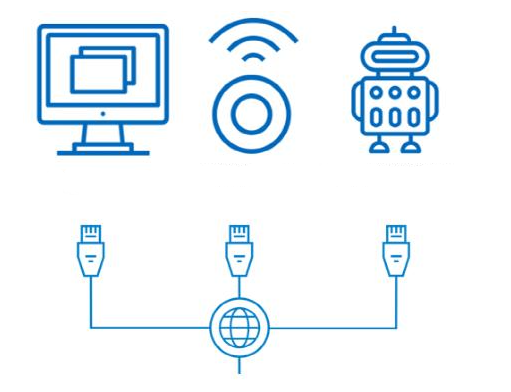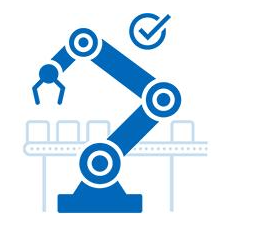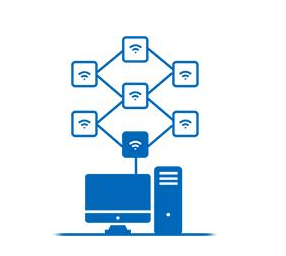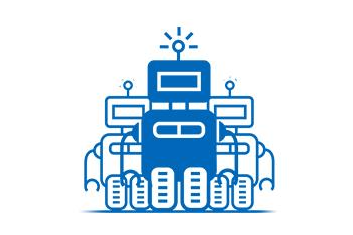junio 18, 2021
1961
Today, the most precious resource in manufacturing is not steel, coal or electricity, but data. Manufacturers have embarked on their Industry 4.0 journey, which is the latest industrial revolution driven by artificial intelligence and large-scale connectivity.
In this new era, companies can use the data generated by sensors and digital systems to monitor real-world production processes and lay the foundation for more flexible production models to meet ever-changing consumer needs.
However, as far as the current focus of Industry 4.0 is concerned, consumer demand is only the tip of the iceberg. Under the influence of global economic, geopolitical, environmental, demographic issues and crises, the supply of industrial labor and the supply chain have been hit unprecedentedly. For example, the outbreak of COVID-19 has highlighted the importance of advanced technology, real-time data, and flexible manufacturing and supply chains.
As the degree of automation continues to increase, and robots take on repetitive and dangerous tasks, manufacturers can increase the value of labor and ensure production continuity. This will not only liberate employees and allow them to use their brain power, but also take back the automation and repetitive tasks previously outsourced to complete them on their own. Kaibo Liu, deputy director of the Internet of Things System Research Center and associate professor at the University of Wisconsin-Madison, said: “People are now beginning to discuss and pay attention to more and more functions, such as the use of the Internet of Things, robotics, and augmented reality in manufacturing environments. You will Note that we are beginning to collect data with higher and higher resolution from the manufacturing process, so that we can make real-time decisions in more aspects."
(Manufacturers have to change their operating methods to respond to this new demand, including adopting more localized manufacturing facilities and designing production lines that can be quickly reconfigured for different batch sizes.)
Nicola O’Byrne, Connected Motion and Robotics Marketing Manager, Analog Devices
Increasing the localization of the supply chain will also increase the flexibility of the manufacturing industry, and reduce the impact on the environment by reducing the complexity of transportation. Finally, manufacturers can use reliable real-time data and easily reconfigurable systems to quickly make decisions, such as scheduling maintenance, adjusting machine settings, or switching from clothing production to mask production.
Some elements of the next industrial revolution are still promising future ideas. For example, a group of autonomous robots can collaborate to complete advanced tasks such as construction, restoration, and rescue. Some aspects have become reality. Distributed 3D printing equipment is a typical example, which shortens the time to market and customer delivery time of advanced manufacturing technologies. If they can cooperate with the right partners, today's enterprises can win the advantages of efficiency, safety and productivity brought by Industry 4.0 manufacturing technology, and lay the foundation for the next transformation of the manufacturing industry.
The 4th Industrial Revolution
The third industrial revolution brought us electronics, computing, telecommunications, and digital technology, allowing manufacturers to design factories to produce a few products in large quantities, or even individual products in large quantities. Compared with the 1920s or the early 2000s, today's consumers want more choices and a higher degree of customized experience, so they need more flexibility.
Kevin Carlin, vice president of the Otosense AI division of ADI's condition monitoring, said: "If you want to buy a car, you have many choices. Manufacturers need to be able to meet hundreds of thousands or even millions of different configuration requirements. At the same time. It also needs to manage the entire factory and supply chain to be able to respond to this demand in real time and configure the factory to switch from one mode to another."
Making this leap is not easy. Most factories rely on an existing and possibly outdated technology ecosystem. If you simply replace old equipment with new equipment, it is not only expensive, but also often impractical. Therefore, the transition to Industry 4.0 manufacturing should rely on enhancement, not substitution-bringing the intelligence supported by modern IT technology to the existing equipment in the factory.
By building a sensor-driven wireless communication network at the production level, partners such as ADI have helped manufacturers begin to adopt emerging technologies such as condition monitoring. In this way, the factory can monitor the health of specific equipment or parts through sensors, proactively identify, diagnose, and resolve abnormalities, so as to avoid problems or even complete failures. This real-time monitoring can help extend equipment life and increase throughput. Given that the cost of unplanned downtime may account for nearly a quarter of the total manufacturing cost, the use of predictive maintenance is expected to significantly save costs and increase productivity.
Downtime cost
For manufacturers, unplanned downtime is costly, and preventing unplanned downtime is a major goal and feature of Industry 4.0 manufacturing technology.
23.9% of total manufacturing costs come from downtime costs
Apply IT technology to the factory
With the advent of Industry 4.0, manufacturers have begun to transition from traditional computer infrastructure to new network solutions to speed up, improve data management, and increase energy efficiency.

Hardware implementation security
Industry 4.0 manufacturing has a core concept called "interoperability", which is the ability to transmit real-time data among a large number of industrial IoT devices. The manufacturing workshop uses equipment, software protocols and proprietary networks provided by many equipment manufacturers. So far, there is no way for these separate protocols and networks to communicate with each other. The emergence of Time Sensitive Networking (TSN) will realize this function for the first time.
Today's smart factories generate large amounts of data, so in order to achieve interoperability, a reliable field network must be constructed first. Real-time deterministic Ethernet is a technology that can help achieve this goal, and it can more effectively manage the massive amounts of data in interconnected factories. In addition to being a leader in sensor technology, partners such as ADI have also taken the lead in introducing hardware improvements (such as real-time deterministic Ethernet switches) to help build the factory's central nervous system.
"Establish real-time, high-bandwidth connections between various systems to more effectively control various production processes, thereby improving efficiency."
—— MarTIn Cotter ADI, Senior Vice President of Sales and Digital Marketing
MarTIn Cotter, senior vice president of global sales and digital marketing at ADI, said: "In the transition from physical to digital, our task is to ensure that information generated at the edge can now be transmitted to any device in a specific factory." He added: "Establish a real-time, high-bandwidth connection between various systems to more effectively control each production process, thereby improving efficiency, helping to increase the certainty of output, and promoting the realization of the next generation of industrial processes."
After successfully achieving interoperability, manufacturers can begin to adopt exciting advanced technologies in Industry 4.0 manufacturing, such as robots and "collaborative robots" that can work with humans in factories. Like self-driving cars, these machines also rely on the support of advanced sensing solutions to sense the surrounding environment in three dimensions, ensuring a high degree of safety when they perform repetitive and complex tasks.

Next-generation solutions will fulfill the promise of Industry 4.0 and help increase productivity, efficiency, safety and flexibility.

Using the analysis supported by sensors, factories can proactively identify and resolve mechanical problems to prevent machine failures and interruption of production.

Network products customized for industrial environments can even realize IoT communications in harsh manufacturing environments, which brings new challenges to radio frequency.

Advanced motion control and sensing solutions are turning the collaboration of robots and humans into reality and are beginning to be used in factory environments.
Partners such as ADI can combine different sensing modes (such as vision and time of flight) with connection technologies (such as deterministic Ethernet) for real-time data transmission and more precise control of robots and collaborative robots. According to a report, the use of these tools can help US manufacturers save approximately US$40.4 billion annually.
"We provide data, wherever data is generated, we are there. For 50 years, ADI has been trusted by customers to help them solve severe engineering challenges. We have extensive field experience, which helps us to work with today’s customers to drive future development. Laid a solid foundation."
—— MarTIn Cotter ADI, Senior Vice President of Global Sales and Digital Marketing
For manufacturers, moving into the future requires further investment in advanced technology to promote the development of factory automation and increase flexibility. At the sensor drive level that connects the physical world with the digital world, it truly embodies the advantages brought by Industry 4.0.